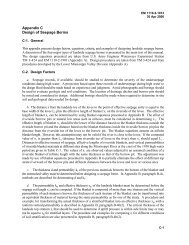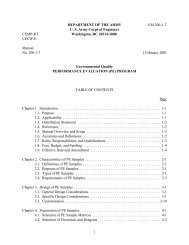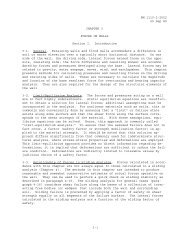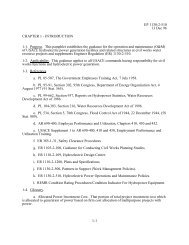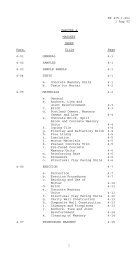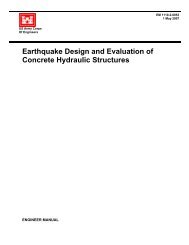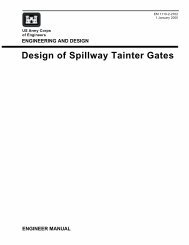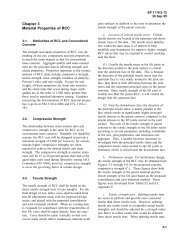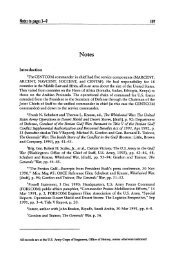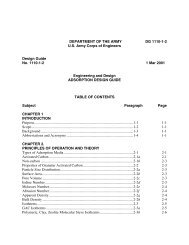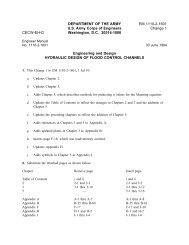Chapter 5 - Publications, US Army Corps of Engineers
Chapter 5 - Publications, US Army Corps of Engineers
Chapter 5 - Publications, US Army Corps of Engineers
Create successful ePaper yourself
Turn your PDF publications into a flip-book with our unique Google optimized e-Paper software.
EM 1110-2-1701<br />
31 Dec 1985<br />
such as HEC-5 are generally capable <strong>of</strong> integrating flood control and<br />
non-wwer storage regulation objectives in the power study (40).<br />
Figure 5-12 shows a rule curve for an existing flood controlconservation<br />
storage project, and it illustrates the type <strong>of</strong> criteria<br />
that sometimes must be observed in making power studies.<br />
(3) The above discussion applies primarily to the sequential<br />
routing method. The duration curve and hybrid methods cannot<br />
explicitly account for non-power operating criteria. The only way in<br />
which they can be reflected is to utilize flow data which already<br />
incorporates these criteria. In hourly sequential routing studies,<br />
additional operating criteria <strong>of</strong>ten must be considered, and these are<br />
described in Section 6-9.<br />
n. ~<br />
(1) Channel routing characteristics are required to define (a)<br />
travel times between projects and/or control points, and (b) the<br />
moderating effect <strong>of</strong> channel storage on changes in discharge. These<br />
effects can usually be ignored in monthly and weekly studies, but they<br />
are im~rtant in daily and hourly studies, especially where multiple<br />
projects are being studied or where downstream non-power objectives<br />
(such as flood control or water SUPPIY) must be met concurrently with<br />
&wer operations. SSR models with daily or hourly capabilities<br />
800<br />
MAXIMUM POOL<br />
FLOOD CONTROL STORAGE ZONE




